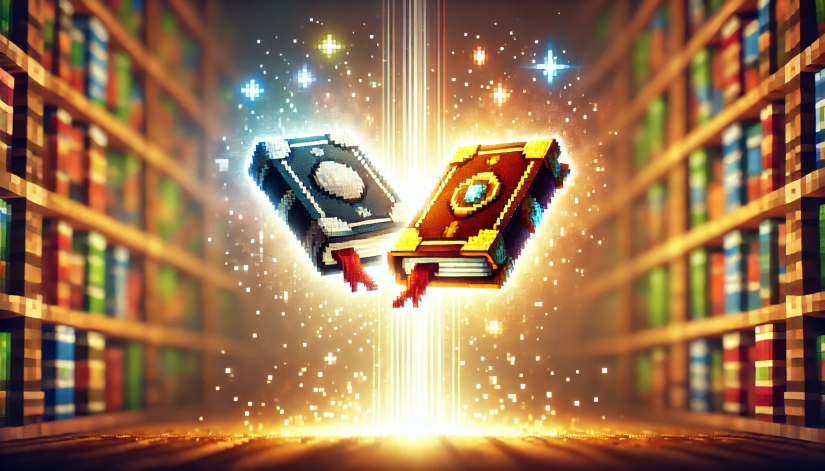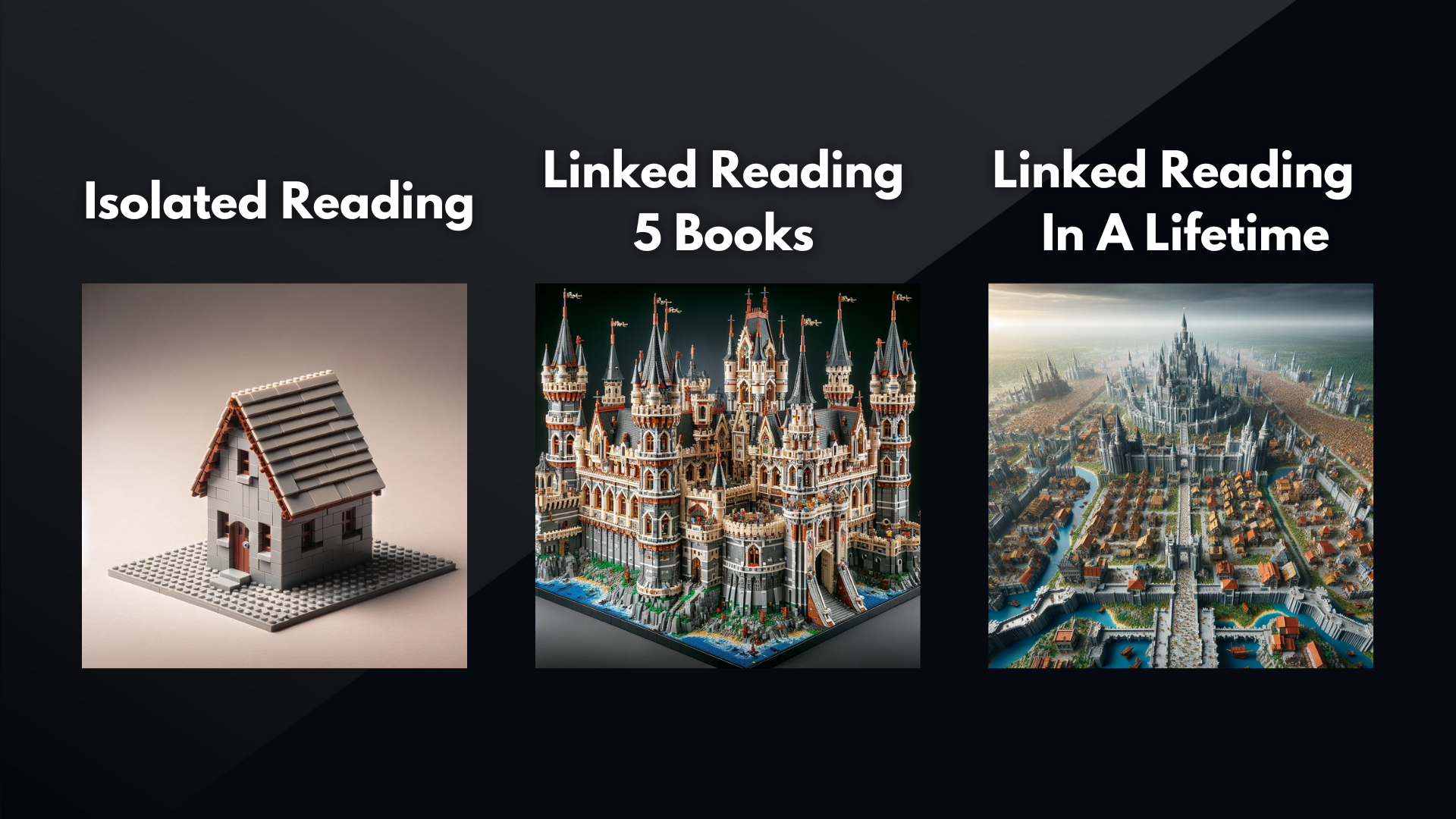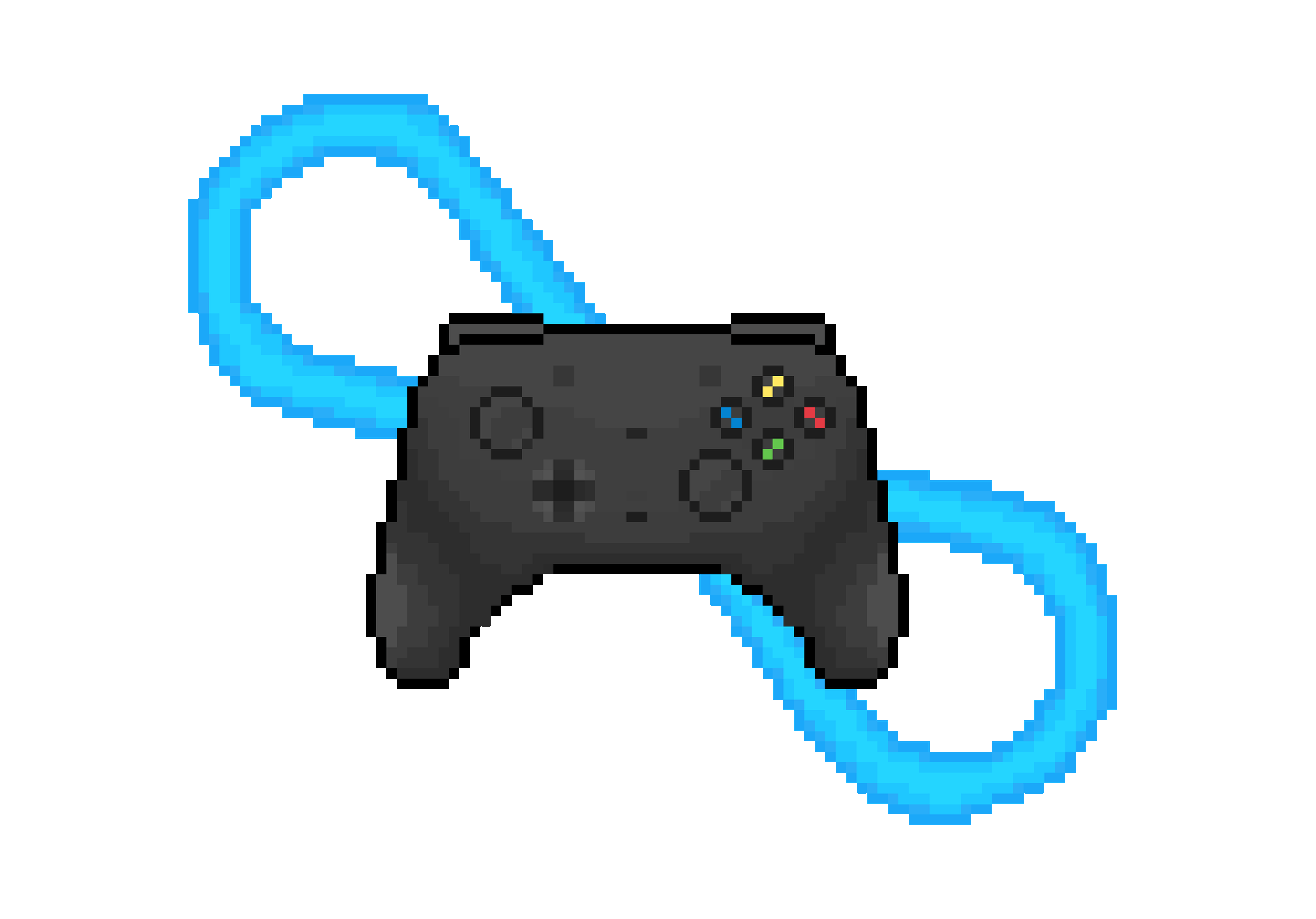📚AIP 92 How I Read Books For Maximum Insight

How can we ensure we actually remember our book insights? How can we apply and communicate our book learnings? How can we make reading fun?
These are the questions I had five years ago when I got back into reading. You might be wondering why, in goodness gracious, you would need to learn how to read a book. You learned how to do that before you learned how to ride a bike. These are valid concerns—I also felt them. But I've realized that how school teaches us to read doesn't promote maximum insight.
To understand why, let me entertain you for one minute and 37 seconds as we delve into another sphere of life: cooking.
In 2004, Chef Thomas Keller stated: "Salt is the new olive oil." It seems like a ridiculous claim. How could salt, the most basic fundamental ingredient of almost every culinary creation, be put on such a high pedestal? Many other chefs thought the same.
Keller thought different. He believed most chefs were salting incorrectly. Most chefs believed salting was a simple thing added after cooking food. That was it.
Keller had been experimenting with salting during different stages of cooking. Something magical happened: the timing of when you added salt led to completely different chemical and physical reactions and therefore vastly different flavors in the meal. Keller's mastery of such a basic yet crucial skill as seasoning helped elevate his career, contributing to his success as a Michelin-starred chef and making his restaurants world-renowned culinary destinations.

In many ways, reading is like salting--a basic skill foundational to another avenue of life: becoming a wiser and more knowledgeable individual. As Thomas Keller did with salting, I've explored new ways to do it that I think enhance the practice; reading becomes more flavorful as you fully extract the flavors from each book, creating a vivid blend in your mouth. That said, let's explore how I read books for maximum insight. For background on a large part of the inspiration behind my system, you should check out Mortimer J. Adler's fantastic book, How To Read A Book.
Step 1: Inspectional Read
You've got your book. You've chunked out some time to read. You have your complimentary peanut butter snack if that's your thing.
The first thing I like to do is inspectionally read my book, which is essentially speed-dating--just enough time to see if it's worth a second outing but not enough for dinner. The main goal of this step is to learn if the book is worth reading deeper and prime me for the book's arguments if I read it (If you don't like it, don't read it). Think of it like warming up at the gym. It prepares your muscles for the onslaught you are about to put on them--if you're doing leg day, at least. Inspectional reading can also be used to inspect the text for specific pieces of information saving you time consuming the full thing.
I was skeptical about the importance of inspectional reading until it saved ten hours of my life. I was taking a Cornell class on making better decisions when my professor assigned us his whole dang book for next week's reading. 500 pages. I could play ten hours of Balder's Gate III in that time!
Thankfully, I noticed he had included the test questions he would be asking about the book. I realized I didn't have to read the whole book--I only needed to inspectionally read to answer the test questions. I turned a 500 page reading assignment into a 50 page one (and eight hours of Balder's Gate III).
So, how do you inspectional read? To start, I X-ray the book in this order:
- Examine The Preface (or as I like to think of it, the authors justification for spending two years writing instead of enjoying life): Skim it to get a sense of the book's subject and the author's perspective on it.
- Study the Table of Contents: Use it to understand the structure of the book, akin to how one would use a road map before a journey.
- Check the Index: If the book has one, glance through it to gauge the range of topics covered and the references made.
- Read the Publisher's Blurb: If the book is new and has a dust jacket, reading this can give you a general sense of the book's content and significance. Note that some blurbs are purely promotional, while others provide insightful summaries.
- Inspect Pivotal Chapters: Based on your understanding from the previous steps, identify and look at chapters that seem central to the book's argument. Pay attention to summary statements at the beginning or end of these chapters.
- Thumb Through the Book: Skim through the pages, reading short sections sporadically. Focus on getting a sense of the book's main ideas. It's crucial to read the last few pages or the conclusion, as authors often summarize their main points or contributions there.
After this process, you should be able to answer three questions:
- What is the book about as a whole?
- What are the major parts of the book, and how do they combine together to make the whole?
- What are the major problems the author is trying to solve?
That's all inspectional reading is! Double points if you do it while holding a magnifying glass.
Step 2: Analytical Reading
Analytical reading is reading to deeply analyze a single book.
You may think you already do this when you read. But analytical reading isn't a simple act of reading straight through a book. It involves asking deep, difficult, analytical questions. Questions without which we wouldn't have The Legend Of Zelda: Breath Of The Wild.
Fujibayashi, the game's director, sought to reinvent the iconic series by moving away from its traditional linear gameplay. In his quest for innovation, he drew deep inspiration from Joseph Campbell's "The Hero with a Thousand Faces," which outlines the universal structure of the hero's journey found in myths across cultures. Fujibayashi didn't just read the book casually—he analyzed it deeply, trying to understand how each individual argument fit into the book's larger narrative. This allowed him to understand the core elements that make a hero's journey compelling and how he could adapt them to an open-world game format.
The result was Breath of the Wild, a game that is literally breathtaking. The game's critical and commercial success is a testament to how Fujibayashi's analytical reading and understanding of storytelling principles from literature helped create a groundbreaking experience that resonates deeply with players.
So, how can we do analytical reading ourselves? There are four essential stages to analytical reading:
- Stage 1: What is it about as a whole?
- Stage 2: What is being said in detail and how?
- Stage 3: Is it true, in whole or in part?
- Stage 4: What of it?
Notice how the first question, "What is it about as a whole?" incorporates the previous step of Inspectional reading. The essence of inspectional reading is in uncovering what the book is about as a whole. We're already done with one stage!
The second stage of analytical reading involves determining the main arguments in each chapter and how they connect to form the book's overarching arguments.
So, while you're reading each chapter of the book, ask yourself, what is the author saying here? What does this remind me of? What does this connect to? Will this look good on my bookshelf next to all the other unread books? I like jotting notes in the margins or writing notes on Kindle that highlight my answers to this question while reading.
The third stage of analytical reading involves asking if the book is true, in whole or in part.
There are four things we can say to criticize the author:
- The author is uninformed.
- The author is misinformed.
- The author commits argumentative fallacies
- The analysis is incomplete.
If we claim the author is uninformed, we believe they don't have all the information necessary to give a true analysis. If they had more information, they might have come to different conclusions.
If we claim the author is misinformed, we believe some of their evidence is false. If they had the true evidence, they might have come to different conclusions.
If we claim the author commits argumentative fallacies, they must commit one or more fallacies like straw-manning, ad hominids, and more.
Finally, if we claim the author's analysis is incomplete we suggest that:
- They haven't addressed all initial problems.
- They haven't fully utilized their resources.
- They overlooked potential implications and ramifications.
- They missed crucial distinctions relevant to their objectives.
If you can't criticize an author in one of these ways, there is nothing else you can do but agree. You can't say that I see nothing wrong with your argument, but I still think you're wrong.
Finally, the fourth and last stage of analytical reading is asking, what of it?
What was the point of reading the information? What value does it give you or the world?
This will be highly subjective. And hopefully you asked this question to some extent before reading. But here are a few of the questions I ask after reading a book to answer this question:
- Can I apply this to a project in my life?
- Can I use this to improve my health, work, and relationships?
- How can this help me follow my values?
- Is there someone who might resonate with this book?
Analytical reading a book like this is time-consuming. But a year later when you can still talk about the book with pizazz, you'll realize it was worth it. And if it wasn't a good book, you can simply use it as an expensive but effective doorstop.
Step 3: Create Linked Book Notes
The last step in how I read books for maximum insight is creating linked book notes. I personally use the linked-based notetaking app Obsidian, but you can use any notetaking app with linking capabilities or any notetaking medium, albeit with a bit more difficulty.
Most people, if they even read, don't put an active effort into connecting their book insights. Linked book notetaking gives us the power to put books in conversation with each other. No, not literally making them talk to each other, though that puts an entertaining image in my mind--connecting them to create new insights.
I know the power of this connection because it solved my video game addiction. I used to be incredibly addicted to video games playing Minecraft, Terraria, Civ 6 and more for hours every day. School wasn't nearly as fun in comparison.
But through reading books like Actionable Gamification, Superbetter, Reality is Broken, and more I came to an insight: what if I made real life into the most fun game imaginable?
Rather than coming to games for escape, I began coming to them with an analytic lens. What makes them so engaging, fun, and motivating? I learned about self-determination theory (SDT), the Octalysis Framework, Flow theory, and more. Slowly, I started applying these insights to real life. My video game addiction stopped being an issue, real life was more fun than they could ever be. And it all came from some simple connection.
This next idea is crucial:
There are no rigid disciplines in the universe, only concepts.
All disciplines — Biology, Neuroanatomy, Behavioral Statistics, American History, etc. — are just highly related concepts linked together. It's through the linking of these highly related concepts, that your knowledge starts to grow. Your knowledge becomes more than the sum of its parts.
Think of your book insights as lego bricks. When you read 5 books in isolation, you can only build a dinky little house. But when you read 5 books with linked reading, you can build a massive castle or city complex.

This is reading at its best.
How To Create Linked Book Notes
Once you have your highlights in your notetaking app or your physical book in front of you and are ready to create linked book notes. I usually create linked book notes in the few days to weeks after finishing a book while it's still fresh in my mind. When I'm ready, I go into my book note and put this book summary template at the top:
🚀The Book in 3 Sentences
Linked Book Notes
✍️ My Top 3 Quotes
☘️ How the Book Changed Me
📖Who Should Read It?
🎨 Impressions
Then, I follow these three steps for creating my linked book notes.
- Step 1: Read Through Your Highlights And Annotations
- Step 2: Create Linked Book Notes With Freewriting, RRR, Or The Idea Compass
- Step 3: Fill Out The Book Summary Template
Step 1: Read Through Your Highlights And Annotations
Firstly, I read through all of my highlights and annotations.
This helps me recontextualize myself with the book and primes me for creating my linked book notes.
Step 2: Create Linked Book Notes With Freewriting, RRR, And The Idea Compass
In step 2, I start creating linked book notes by returning to the top of my highlights and reading down, creating linked book notes along the way.
For the most part, you can be free as a pirate with your linked book notes. But I must adopt the schoolteacher hat for a couple of paragraphs and tell you one principle you must follow: atomicity. Atomicity states one idea should form the emphasis of the note, and the other ideas are background contextual or supporting evidence.
This means they can be quite large and have many ideas, BUT they FOCUS on one. Think of your linked book notes like a spice rack—each note should focus on one core idea, like a single spice in a jar, so you can easily combine them to create new insights. If you cram too many ideas into one note, it becomes a confusing mix, making it harder to find and use the right "ingredients" when you're connecting ideas. Keeping your notes "atomic" ensures clarity and helps you build more effective, creative thoughts.
Keeping this in mind, there are three methods I use to create my linked book notes:
- Freewriting
- RRR
- The Idea Compass
These are simply the techniques I use to create my linked book notes. But you can use any method you like. As long as you follow the principle of atomicity. That's the beauty of reading. There is no one size catch all solution. You can create your own practice.
For the purpose of this article, I'll show you one linked book note I created from the book Glued To Games so you get the idea of what they are like. Here's a note I wrote called "games are incredible at fostering the flow state."

Notice how it focuses on one idea—that games are incredible at fostering the flow state—but links to my other ideas on flow. I reference the book notes at the bottom to know where the idea originated.
I do this with all the ideas I find important from a book. By the end of this process, I have a whole bunch of linked book notes. Here are just a few of my linked book notes from Behave by Robert Sapolsky:

Imagine you have this many insights with every book you read. And as you read more books, your insights compound into a lego brick empire over time. Insane.
Step 3: Fill Out The Book Summary Template
Once you've created all your linked book notes, it's time to fill out the book summary template.
Simply write out a summary of the book in 3 sentences. This is more for your future self than anything in case they want to recontextualize themselves with the book.
Write out your impressions. How did you think and feel about the book? If you didn't like something, BASH IT IN, lol. Or be nice.
Who else should read the book? This will give you ideas for people you might consider gifting the book to.
How did the book change you? Do you see the world any differently now? Did you apply or want to apply anything from the book?
Finally, what were your top 3 quotes?
Here's what this process looks like for Behave:

Isn't This A Lot Of Effort?
I know what you're thinking, this looks like it takes more time than doing my taxes…
You're right. Doing all of this with every book you read, takes a lot of time. You'll almost certainly spend twice or three times as long on a book as you usually would.
But let me return by asking you a question: why are you reading in the first place?
Is it to maximize the number of books you can say you "read" throughout the year? Are you trying to reach some sort of book milestone? This is what my friend Odysseass calls hustle-learning.
What if we ascribed to anti-hustle learning? This process will mean you read fewer books. But the books you do read, you will READ. And isn't that the true point of reading: to have fun, come out with new insights, and change your life?
If you liked this article you should check out Self-Learning Quest. This free course helps video gamers make self-learning outside work and school the ultimate game by combining gamification with science based meta-learning techniques. Stay focused, maintain motivation, and learn faster outside work over five days. The average person spends 2/3 of their life outside work–-who could you be if you used even 10% of that for learning?
